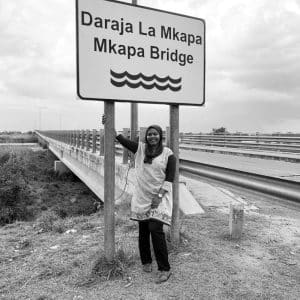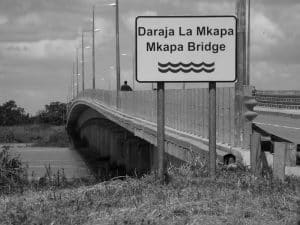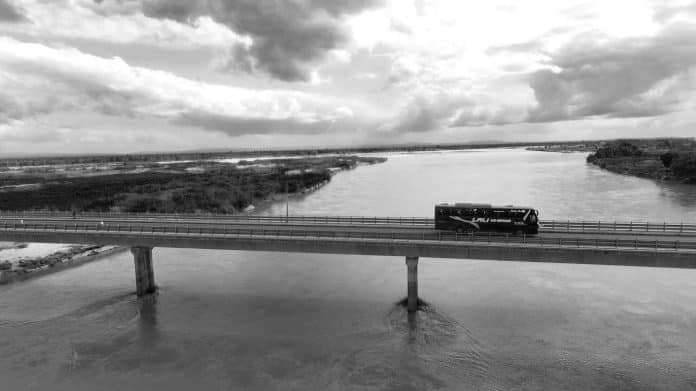Introduction to the Mkapa Bridge
The Mkapa Bridge stands as a testament to Tanzania’s unwavering commitment to infrastructure development and connectivity. This remarkable engineering feat, named after the former President of Tanzania, Benjamin Mkapa, spans the mighty Rufiji River, transforming the landscape and the lives of the people who call this region home.
Importance of Infrastructure Development in Tanzania
Tanzania, a country renowned for its natural beauty and diverse cultural heritage, has long recognized the vital role that infrastructure plays in driving economic growth and social progress. From the construction of highways and railways to the development of ports and airports, the Tanzanian government has consistently invested in building a robust and reliable infrastructure network.
The Significance of the Rufiji River in Tanzania
The Rufiji River, a vital waterway that flows through the heart of Tanzania, has long been a vital artery for transportation, agriculture, and economic activity. However, the lack of a permanent crossing had posed a significant challenge, hindering the region’s development and limiting the movement of people, goods, and services.
The Need for a Bridge on the Rufiji River
The need for a bridge on the Rufiji River had been a pressing issue for decades. The river’s unpredictable nature, with its seasonal flooding and shifting currents, made it a treacherous obstacle for those relying on ferries or makeshift crossings. The absence of a reliable and safe passage across the river had stifled economic growth, restricted access to essential services, and hindered the region’s overall development.
The Construction of the Mkapa Bridge

In response to this pressing need, the Tanzanian government embarked on an ambitious project to construct the Mkapa Bridge. The project, which began in 2003, was a joint effort between the Tanzanian government and the Japanese government, who provided significant financial and technical support.
The construction of the Mkapa Bridge was a complex and challenging endeavor, requiring the coordination of hundreds of skilled workers, engineers, and project managers. The project faced numerous obstacles, including harsh environmental conditions, logistical challenges, and the need to ensure the safety and well-being of the local communities during the construction process.
Key Features and Specifications of the Mkapa Bridge
The Mkapa Bridge is a remarkable engineering feat, boasting impressive specifications and features that have transformed the landscape and the lives of the people who rely on it. Some of the key features of the bridge include:
- Length: The Mkapa Bridge spans an impressive 2.36 kilometers (1.47 miles) across the Rufiji River, making it one of the longest bridges in Tanzania.
- Height: The bridge stands at a height of 40 meters (131 feet) above the river, allowing for the free flow of water and the passage of large vessels beneath it.
- Construction Materials: The Mkapa Bridge is constructed using high-quality materials, including reinforced concrete, steel, and advanced engineering techniques, ensuring its durability and longevity.
- Design: The bridge’s design incorporates a unique cable-stayed structure, which provides exceptional stability and load-bearing capacity, making it capable of supporting heavy vehicles and equipment.
- Safety Features: The Mkapa Bridge is equipped with state-of-the-art safety features, including emergency lanes, pedestrian walkways, and advanced lighting systems, ensuring the safe passage of both vehicles and pedestrians.
Benefits of the Mkapa Bridge for Tanzania’s Development
The Mkapa Bridge has brought about a transformative impact on Tanzania’s development, delivering a wide range of benefits to the local communities and the country as a whole. Some of the key benefits include:
- Improved Connectivity: The bridge has significantly enhanced the region’s connectivity, facilitating the seamless movement of people, goods, and services across the Rufiji River. This has led to increased trade, improved access to healthcare and education, and the fostering of greater social and economic integration.
- Economic Growth: The Mkapa Bridge has catalyzed economic development in the surrounding areas, attracting new businesses, industries, and investments. This has created job opportunities, increased tax revenues, and contributed to the overall prosperity of the region.
- Enhanced Agricultural Productivity: The bridge has improved access to fertile agricultural lands and markets, enabling farmers to transport their produce more efficiently and reach a wider customer base. This has led to increased agricultural productivity and improved food security.
- Improved Emergency Response: The bridge has played a crucial role in enhancing emergency response capabilities, allowing for the rapid deployment of emergency services and the efficient transport of medical supplies and personnel during times of crisis.
- Environmental Conservation: By providing a reliable and safe crossing, the Mkapa Bridge has reduced the need for unsustainable practices, such as illegal logging and mining, that were previously prevalent in the region. This has contributed to the preservation of the Rufiji River’s delicate ecosystem and the surrounding natural habitats.
Challenges Faced During the Construction of the Mkapa Bridge
The construction of the Mkapa Bridge was not without its challenges. The project faced numerous obstacles, including:
- Harsh Environmental Conditions: The Rufiji River region is known for its extreme weather patterns, with heavy rainfall, strong winds, and seasonal flooding. These environmental factors posed significant logistical and engineering challenges during the construction process.
- Logistical Complexities: The remote location of the project site and the limited infrastructure in the surrounding areas presented significant logistical hurdles, requiring the transportation of heavy equipment, materials, and personnel over long distances.
- Community Engagement: Ensuring the safety and well-being of the local communities during the construction process was a top priority. This required extensive community engagement, negotiation, and the implementation of comprehensive social and environmental safeguards.
- Funding and Resource Allocation: The Mkapa Bridge project required substantial financial resources and the coordination of multiple stakeholders, including the Tanzanian government and international donors. Securing the necessary funding and efficiently allocating resources was a critical challenge throughout the construction phase.
Impact of the Mkapa Bridge on Local Communities and Businesses

The Mkapa Bridge has had a profound impact on the local communities and businesses in the Rufiji River region. By enhancing connectivity and facilitating the movement of people, goods, and services, the bridge has transformed the economic and social landscape of the area.
Local businesses have experienced a surge in economic activity, with increased access to new markets and the ability to expand their operations. Farmers have been able to transport their produce more efficiently, leading to higher incomes and improved livelihoods. Additionally, the bridge has provided employment opportunities during the construction phase and continues to generate jobs in the maintenance and operation of the structure.
Furthermore, the Mkapa Bridge has improved access to essential services, such as healthcare and education, for the local communities. Residents can now travel more easily to nearby towns and cities, accessing better medical facilities and educational institutions. This has had a positive impact on the overall well-being and quality of life of the people living in the region.
Future Prospects and Potential Developments around the Mkapa Bridge
The Mkapa Bridge has not only transformed the present but also holds the promise of a brighter future for Tanzania. As the country continues to invest in infrastructure development, the bridge is expected to serve as a catalyst for further economic and social progress in the Rufiji River region.
Potential future developments around the Mkapa Bridge include the establishment of industrial zones, the expansion of agricultural activities, and the development of tourism-related infrastructure. The bridge’s strategic location and improved connectivity have the potential to attract new investments, create job opportunities, and spur the growth of small and medium-sized enterprises.
Moreover, the Mkapa Bridge can serve as a model for future infrastructure projects in Tanzania, showcasing the country’s commitment to sustainable development and the effective collaboration between the government and international partners.
Conclusion: The Mkapa Bridge as a Symbol of Tanzania’s Progress and Development
The Mkapa Bridge stands as a testament to Tanzania’s unwavering commitment to infrastructure development and the betterment of its people. This remarkable engineering feat has not only transformed the physical landscape but has also catalyzed economic growth, improved social welfare, and fostered a sense of national pride.
As you journey across the Mkapa Bridge, you are reminded of the power of vision, determination, and the collective efforts of the Tanzanian people and their international partners. This bridge is more than just a structure; it is a symbol of Tanzania’s progress, a testament to the country’s resilience, and a promise of a brighter future for generations to come.
For more information on infrastructure click here!

































